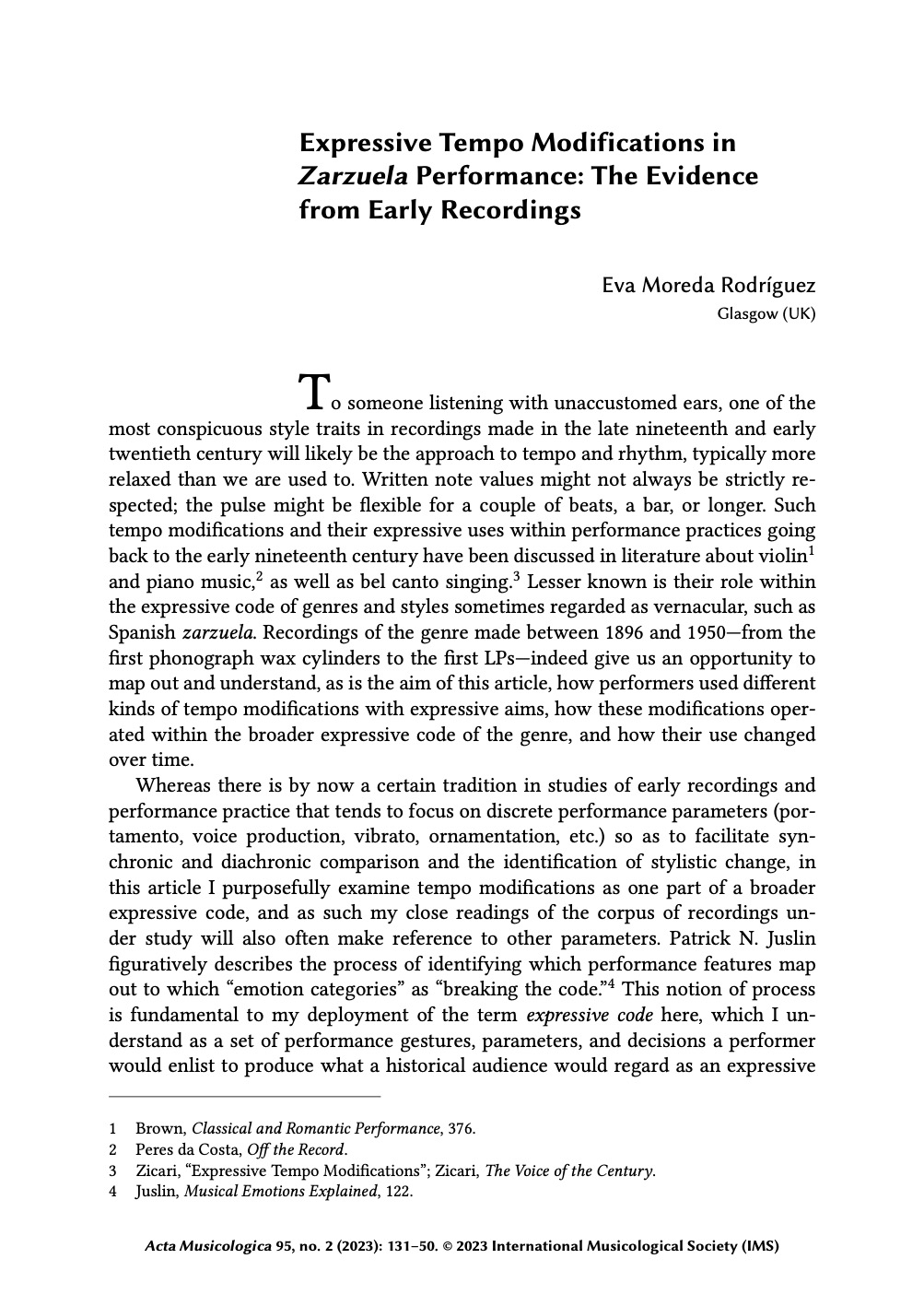Abstract
By surveying a corpus of recordings dating from the 1890s to the 1950s, the present article reconstructs how tempo modifications (ranging from metrical rubato, to small- and large-scale tempo modifications, to contrasts of tempo) were employed by Spanish zarzuela performers. The article aims at providing a context-sensitive approach, contextualizing and interpreting each recording within both the constraints of recording technologies and the broader discourses concerning ontologies and aesthetics of recorded music in the first decade of the twentieth century. It discusses two main findings emerging from the evidence which might be of broader relevance for the scholarship of early recordings as documents of nineteenth-century performance practice: (1) the connection between tempo modifications and the need to communicate Spanish-language text expressively, which zarzuela shared with other vocal music genres of the period while at the same time developing some particularities in this regard; (2) the gradual abandonment of the most extreme forms of tempo modification around the time of the introduction of electrical recording as an example of the “phonograph effect,” discussed by Mark Katz in an article of 2006.
